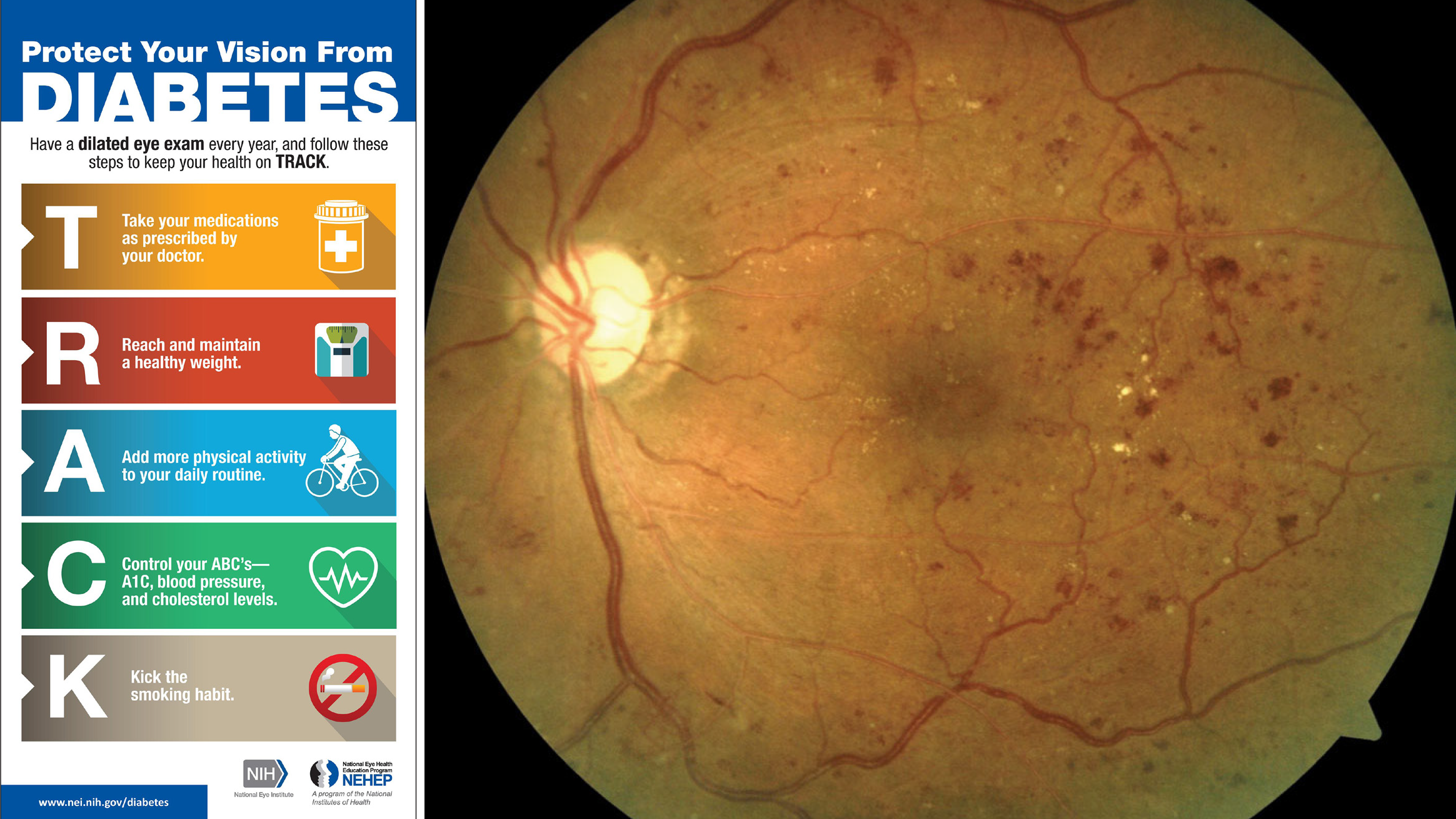 |
| It is crucial that all adults with diabetes have regular diabetic retinopathy surveillance exams to decrease their likelihood of worsening eye health and progression to vision-threatening diabetic retinopathy and/or diabetic macular edema. Click image to enlarge. |
It is imperative to understand eye care disparities for adults with diabetes, who are at an especially high risk for vision difficulty and impairment. In the US, people from underrepresented minority groups have been shown to have worse visual outcomes across a variety of ophthalmic diseases. These disparities may be attributable to the lack of quality health insurance or the deficiency of access to and/or use of eyecare services by socioeconomically disadvantaged Americans and racial/ethnic minority groups.
Given the likelihood of worsening eye health and complications from diabetic eye disease, it is recommended that people with diabetes receive a diabetic retinopathy screening and dilated fundus exam at least on an annual basis. A research team based out of Johns Hopkins University School of Medicine and Howard University Hospital originally hypothesized that racial disparities in eye care use would remain among adults with both vision difficulty and diabetes. However, they found that racial disparities were mostly seen among diabetic adults without vision difficulties.
This study, published in Ophthalmic Epidemiology, pooled cross-sectional data from the National Health Interview Survey from US adults 18 years old and older. Of the 284,599 adults included in this study, the majority were female (55%), Caucasian (73%) and non-Hispanic (84%). The cohort was organized into four groups: (1) no vision difficulty or diabetes, (2) only diabetes, (3) only vision difficulty and (4) both diabetes and vision difficulty. Vision difficulty was defined as self-reported difficulty seeing even with glasses or contacts. Diabetic status was defined as ever receiving this diagnosis by a health professional.
Regression analysis revealed that, compared with adults without diabetes or vision difficulty, adults with both diabetes and vision difficulty had the greatest use of eyecare services (OR = 2.49). Females had higher use of eye care than men (OR = 1.45). Higher levels of education was associated with greater use (OR = 1.82), and Caucasian and Native American adults without diabetes had higher use compared with other races (OR = 1.17).
The researchers proposed that, perhaps once someone with diabetes has vision difficulties, they were more likely to see an eye doctor, regardless of race. They suggested that adults with diabetes already having preexisting entry ports into the healthcare system due to their diabetes management and counseling recommendations for retinopathy screening from their primary care provider. This might make them more likely to adhere to eye visit recommendations.
“Since adults without diabetes may not be as likely to already be within the healthcare system, they may not be as open to or aware of the necessity for eye care appointments,” they noted in their paper on the study.
An additional unexpected finding was the lack of an increase in eye care use amongst adults with diabetes in the West and South as compared with other regions. “This may be due to a scarcity of eyecare professionals in these regions or different barriers to this type of care in these regions,” the researchers wrote. “Structural barriers such as the availability of appointment scheduling and hospital funding may limit the quantity of patients that can use these services.”
Nevertheless, the researchers found the results of their study give some hope. “The higher eye care usage amongst adults with diabetes seen in this study may indicate that this demographic is becoming more aware of the need for eye care visits to maintain their eye health, that primary care providers are more consistently referring their patients with diabetes for diabetic eye exams or that access of patients with diabetes to evaluation with an eye care provider may be improving.”
Brinson J, Kumar P, Wang J, et al. Disparities in eye care utilization by self-reported vision difficulty and diabetes status in the United States. Ophthalmic Epidemiol. August 23, 2023. [Epub ahead of print]. |

